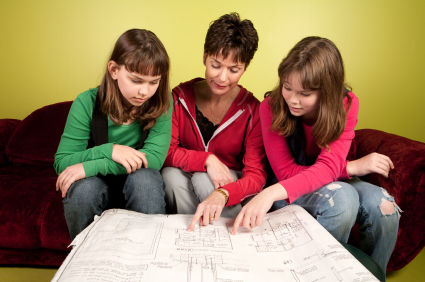 You spoke and we listened. A new-and-improved version of the MamaBear Family Safety App inspired by suggestions from our users is now available.
You spoke and we listened. A new-and-improved version of the MamaBear Family Safety App inspired by suggestions from our users is now available.
MamaBear 2.0 features a number of enhancements that will be of interest to both children and parents:
- Parents will love the larger map view with one-tap access to all information and more details on a child’s activities, such as their current and recent locations and any recent alerts received.
- School and safe place alerts are now combined into a simpler feature with notifications letting parents know when their child has arrived or left places. The arrival alert to safe places provides additional comfort to parents.
- The new view when a child’s logged in makes MamaBear more entertaining for kids and supports the app as a family communication tool. Enhancement to the check-in feature uses fun emoticons to share how they’re feeling. And it’s customizable allowing children to choose their own wallpaper for the app background.
How to Get the Update
Visit the Apple App Store on your iOS devices and the Google Play Store on your Android devices to install or update the MamaBear App. Remember to update the app on your children’s phones for optimal use of the new features and be sure your children are appropriately logged in.
If it’s your first time installing MamaBear:
1. Download the app on the primary parent’s phone and create an account to add your family members. Add the phone number and/or e-mail address you want to monitor as the child.
2. Install the MamaBear App on the child’s phone. Log In with your child’s phone number and your password. The child’s view of the app is different than yours.
3. Be sure MamaBear App stays put. If your child closes MamaBear out of memory or deletes the app on their phone, you won’t receive location points. Check settings on your child’s phone to make sure location services is turned on and background refresh is on. Updated locations are controlled from MamaBear being active on your child’s phone.
Here’s a video to help set up parental restrictions on iPhone to prevent deleting apps.
Related: New Phones – Happy Kids – Anxious Parents
Helpful Tips
- Added guardians will have the same parental view as the main account holder. The main account holder and guardians will only be able to view children’s location and alerts, not each others.
- You can monitor Facebook and Instagram activity without your child logging in to the app. You’ll simply need their login and password for each social site. Build a restricted words list to be alerted to inappropriate language, indications of hate or bullying.
- Set Up location, driving and social media alerts. On the parent’s MamaBear version, tap “Settings” and select your child. You will see the easy-to-follow options for setting up alerts for location, social media and driving. When entering an address – keep it simple. In many cases, you don’t need to enter the full address. We use Google to look up what we think you mean. Sometimes just a place name works for the address to pop-up an accurate “did you mean” box.
Related: When Parents Monitor Kids’ Instagram
Tell Us More
We couldn’t have developed MamaBear 2.0 without the invaluable feedback of our friends and fans. But our work isn’t done – the team at MamaBear will continue to invite the suggestions of our users so that we can continually work to fill as many family safety needs as we can. The MamaBear Family Safety App provides parents with ways to communicate with and protect their children in the age of digital parenting.
Your feedback is important to us. Stay in touch and let us know what you think of MamaBear 2.0. Email info@localhost with your questions, comments and ideas.


 A milestone transition in a child’s life involves going off from elementary to middle school. Those who have gone through this change with their children learn the experience can be a fun, positive time of growth for a whole family. But it also comes with anxiety, both for parents and their new middle schoolers. Most of that anxiety can be relieved with a little preparation and information about what to expect – and how to manage whatever comes your child’s way.
A milestone transition in a child’s life involves going off from elementary to middle school. Those who have gone through this change with their children learn the experience can be a fun, positive time of growth for a whole family. But it also comes with anxiety, both for parents and their new middle schoolers. Most of that anxiety can be relieved with a little preparation and information about what to expect – and how to manage whatever comes your child’s way.